The origin of UU’s motto
University embraces the Sun of Righteousness
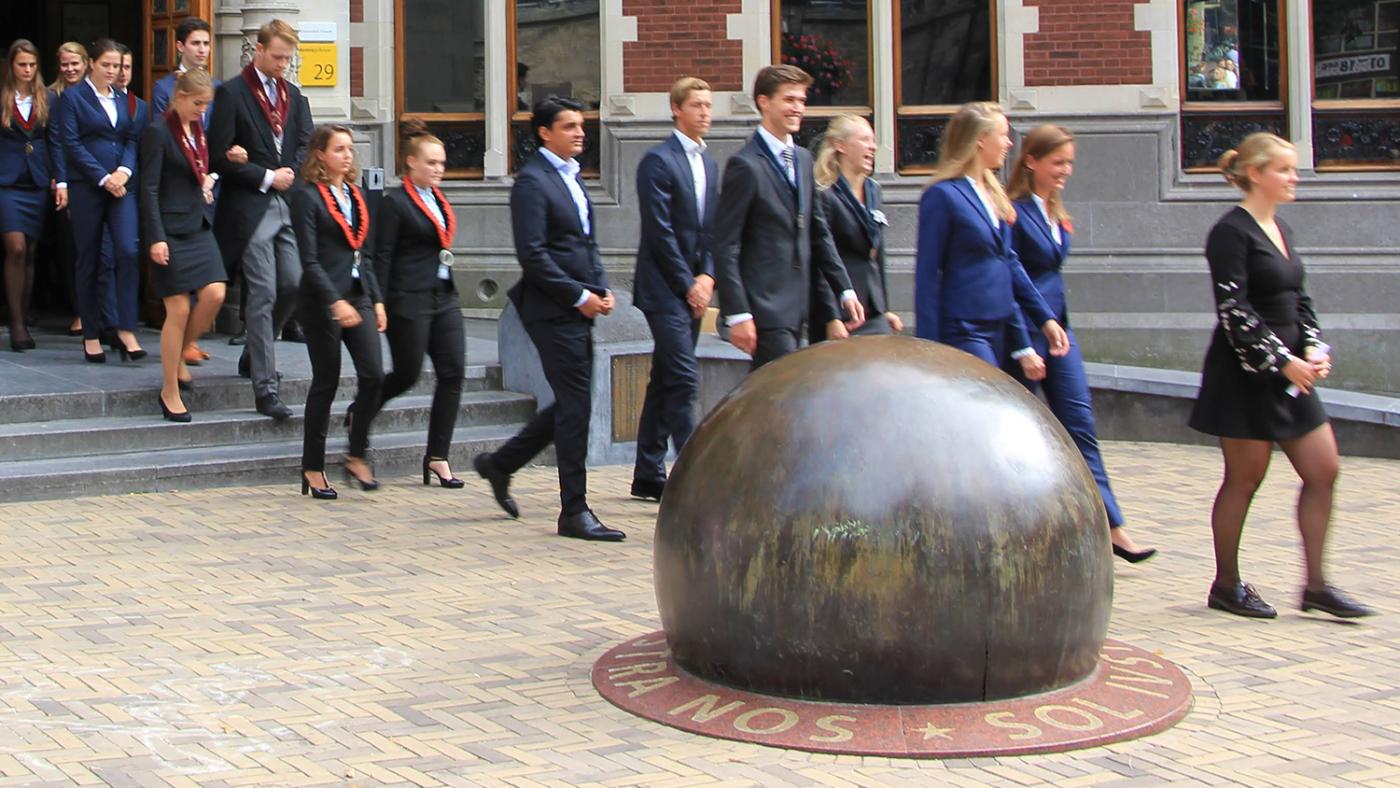
The bronze statue in front of the Utrecht University building with the text Sol Iustitiae, Illustra Nos is popular with new graduates, who like to pose next to it holding their diplomas. Some even spread their arms around it for a hug.
These Latin words mean "The Sun of Righteousness Enlighten Us. According to the university's website, the motto was chosen in 1636, when UU was founded. But the website doesn't say anything else. How and why was this particular motto chosen? Although I’ve been working at the university for quite some time, I must say I had never given much thought to the motto until recently. On its new website, the university is going for varying slogans like "Shaping Science, Shaping Tomorrow".
Plato’s cave
Actually, the only time I thought about this motto was when I realised that it fits beautifully with my work as an ethicist studying contemporary righteousness theories. Righteousness as a university core business, fine.
If someone would have asked me to tell them where this motto came from, I would probably have alluded to Plato’s famous allegory of the cave, where people live in the dark and only see shadows of the truth. They are not able to see the truth itself until they’ve found their way out of the cave, entering the light of the sun. Without sun, no enlightenment, no knowledge.
But why "the sun of righteousness"? Why not "the sun of truth"? Righteousness seems more like something for aldermen or judges. Perhaps the university's founders wanted to express that scientists should do something good with that truth; that they should contribute to a better, more righteous world. In that sense, the motto would be a 17th-century incentive to social impact.
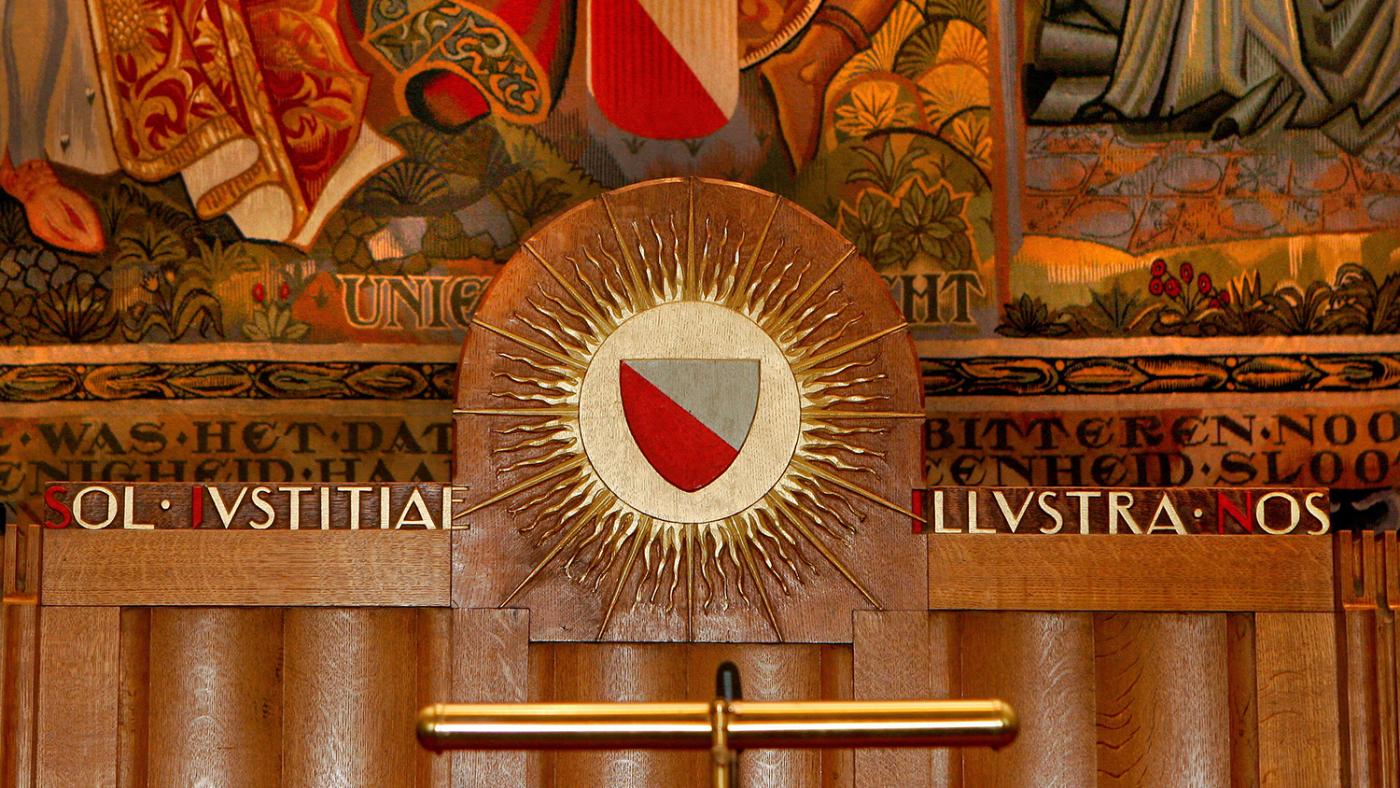
Sol Iustitiae, Illustra Nos. Photo: DUB
Torture
Enough with my own superficial thoughts. My view changed in June when I spotted the expression in an article published by the Dutch newspaper NRC Handelsblad. It was a report covering the draught and record-breaking temperatures in Southern Europe, relating them to climate change. The article ended with the following: "People in Spain sometimes say Un sol de justicia, or the sun of righteousness. This expression dates back to medieval torture during which criminals had to stand in the sun for hours on end, as punishment. Whether they still think the sun in Spain is so righteous now is doubtful."
A reference to a barbarian Medieval practice, in which the term "righteousness" is used ironically, to tell criminals that they are getting what they deserve… That’s a lot to swallow. Is it wise for the university to get inspired by such a thing? My curiosity was piqued. Spanish websites suggest that this was one of the punishments applied by the Inquisition that were supposed to embody "divine justice". Older cultures, like the Sumerians and the Egyptians, already applied this form of torture too.
If we're talking about the Inquisition, then we’re talking about religion — and that is indeed where we should seek the origin of the term "sun of righteousness". In the Maleachi book, from the Old Testament, it appears in the following passage: "But for you who fear my name, the Sun of Righteousness will rise with healing in his wings’ (Mal. 4:2)". Here, the sun refers to God, who, on Judgement Day, takes the godly under his wings. Later, Christ was associated with the sun of righteousness. Those who lived in the light of the Sun of Righteousness are good Christians and shall be saved.
Invincible sun
However, once I started digging a little deeper, I learned that the sun of righteousness is older than Christian theology. It actually stems from the Middle East, so Plato did not come up with that himself. The sun was worshipped as a source of light, goodness, truth, and life in various cultures. In the Bible, the older, pagan practice of sun worshipping is transformed into an acceptable form of workshop for Christians. This was important because, at first, Christianity was competing with other religions, such as Mithras cultus, in which the sun god was referred to as “Sol Invictus" (the invincible sun). With "Sol Justitiae”, Christians brought their own brand to the table.
So, we’re dealing with a metaphor that existed in pre-Christian cultures too. As mentioned before, tying someone up in the sun already existed as a form of torture as well. Christianity thus adopted both the metaphor for God and martyrdom in the name of God. A lot of new knowledge. But what still wasn’t clear to me was: Do divine metaphor and torture have anything to do with each other, or is this a superficial association?
The Bible passage mentioned above gives us a hint. On Judgement Day, Christ will act as a judge. There’s an engraving of Albrecht Dürer from 1499 depicting this. Titled Christ as the Sun of Righteousness, and the subtitle "The Judge". On this engraving, Christ has a melancholic look in his eyes: bringing righteousness into practice, punishing those who are guilty, is not necessarily fun. Making justice prevail means causing suffering to let goodness triumph. A necessary evil, as retaliation for priorly caused evil, to restore moral order.
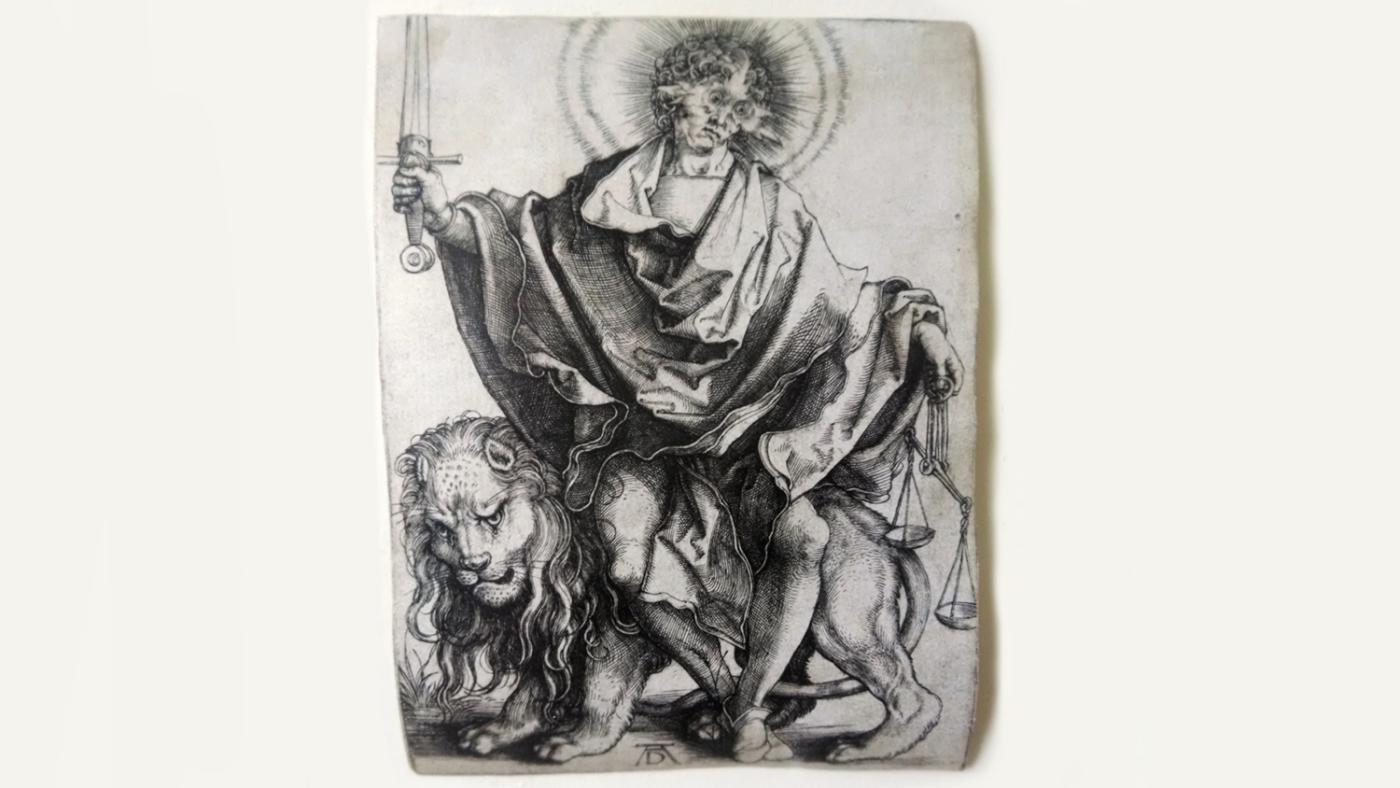
The engraving by Albrecht Dürer from 1499. Photo: Wikipedia
Inquisition
The Inquisition considered it its job to take the work of Christ on earth upon itself until Judgment Day, which included forms of suffering – such as being chained up in the sun – that we now refer to as horrific and sadistic. They were legitimised by the same source, the sun of righteousness. In doing so, the Inquisition put the ball back in God's court by putting the fate of the criminal in the hands of the sun. Indeed, being chained in the sun was part of the judicial process, the establishment of the truth. The result showed God’s judgement of the suspect: if they survived, apparently they were innocent, if they died they were guilty. So, the sun isn’t the symbol of God’s judgement, it rather functions as God’s de facto tool.
The role of the Inquisition as a mediator between God and those who were judged brings me to the second part of the university's motto: illustra nos, enlighten us. The motto is a prayer. It calls upon Christ to stand by us in our work as scientists. In fact, just like the Inquisition, it also places us in the mediating role of earthly judges. In the end, it’s the people who decide what is righteous, enlightened by divine inspiration. Which certainly isn’t all fun – it’s a tough job.
Sun and the climate crisis
The question is what righteousness is to us and how scientists should interpret it. The task is tricky because conceptions of justice tend to shift. Today, we see the persecution and shackling in the sun of infidels as unjust. With today's spectacles, we even speak of crimes. But what are our own blind spots?
Nowadays, the sun is once again at the centre of a drama of guilt and atonement. In the course of millions of years, the sun, the source of life, gave us a wealth of fossil fuels. But we burned them up in rapid succession for the sake of our own greedy desires. Now the sun, in all its mercilessness, is punishing us for our own actions. The sun's heat can no longer escape the earth's atmosphere. Collectively, we are chained in its unrelenting light (with the only consolation being that it can also provide part of the solution - solar energy). We are now calling the Apocalypse upon ourselves. Once again, the sun, not symbolically but in the most literal sense, has the role of God's instrument. We are facing a decade or even centuries-long Judgement Day. And once again, we’ve brought this punishment entirely upon ourselves.
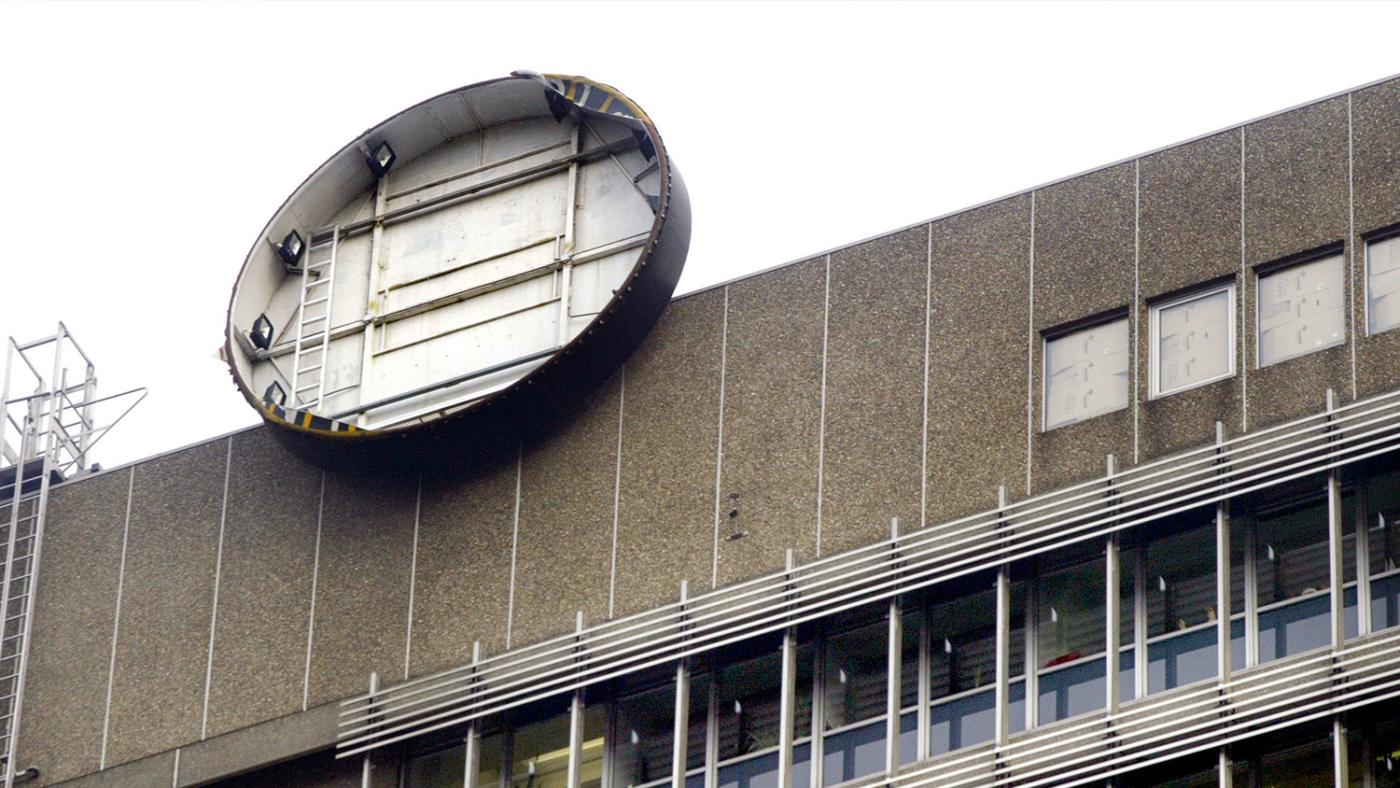
A day when the sun didn't shine...Photo: DUB
Or is this rather a tempting yet misleading analysis? Because who’s this "we" that is causing the climate crisis? The sun isn’t judging humanity as a homogenous collective. Just like with the unfortunate victims of the Inquisition, this punishment affects the wrong people. The proceeds of fossil energy (the dividends from oil companies, the Western lifestyle that makes it possible) accrue excessively to a small upper section of the world's population. The 20 percent of the world's population who emit the most account for 67 percent of all emissions. The negative results are mostly felt by the rest of the world and future generations. We get a holiday that is ruined by a heatwave. They get a country that’s impossible to live in. Now If that is righteousness…
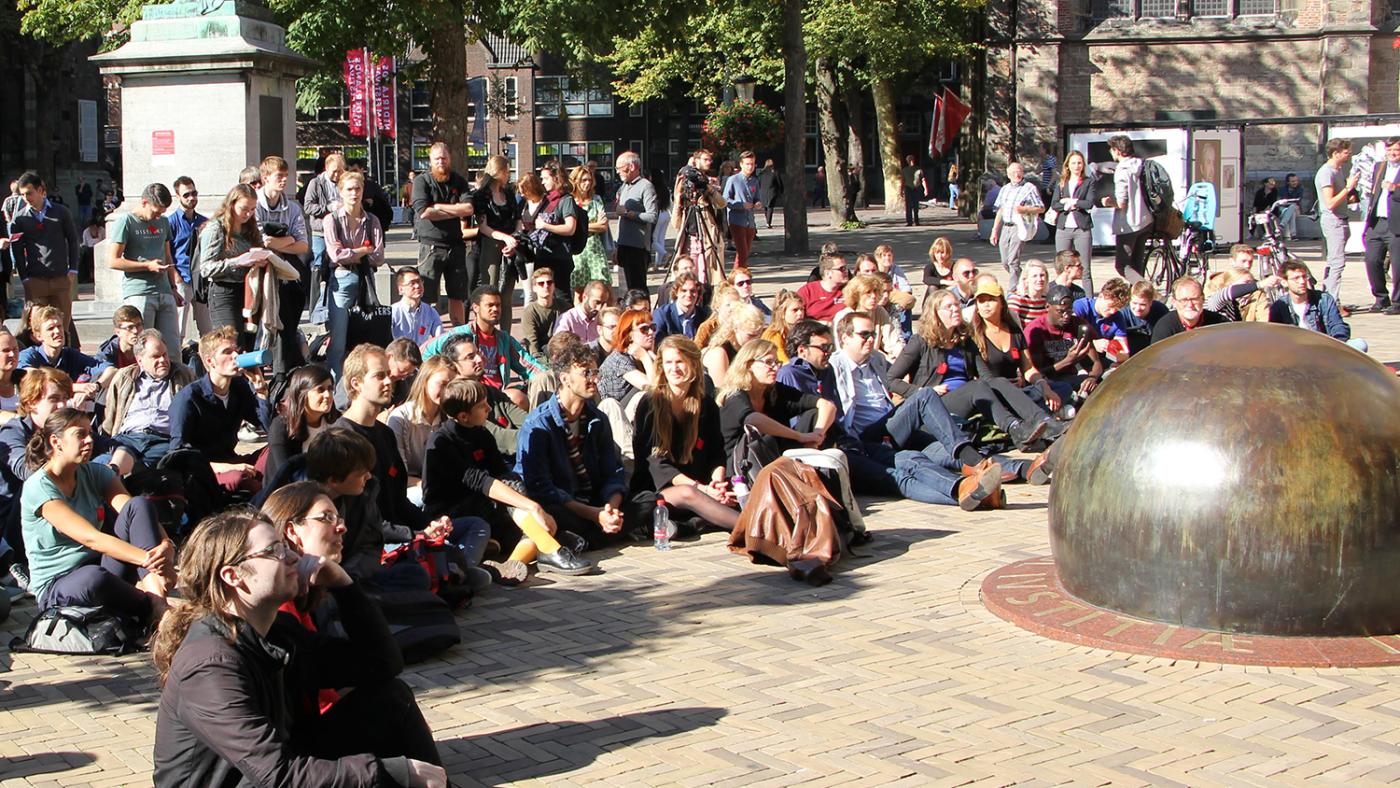
WOinActie. Photo: DUB
A judge in earthly matters
What kind of role should scientists play considering the motto Sol justitiae, illustra nos? It turns out that, as a society, we are not yet able to live in the light of the full truth of the IPCC reports. We’re still in Plato’s cave, denying the truth even though we know better, or hoping too optimistically that the wonders of technology will save us. Just like during the Inquisition, we legitimise the deliberate infliction of suffering on others using all kinds of fallacies. I see it as the university's job to speak about this given its role of "judge in earthly matters", even when that role is painful for us.
What led the university's founders to choose this motto in 1636? The most obvious explanation is that the university community wanted to show itself as a godly institution. God, give us inspiration in our work! Roelof van den Broek stated in his 1995 inaugural lecture in commemoration of the university's anniversary that the inspiration came from a gloss in the margin of the Bible translation of that time (Hy leeret ende beschuttet on the university's coat of arms and motto). In a Psalms verse in which God is mentioned as the sun, it states that the sun symbolises the fact that God "leeret", i.e. teaches people. Teaching at the university thus is an activity privileged by God.
But perhaps the founders – we can only speculate – also wanted to provide a deeper, hidden meaning. After all, back in 1636 the Republic still found itself in a battle of independence against the Spaniards. The Inquisition was also well known here. If, back in those days, these punishments were also known by the name "sun of righteousness" (which is unclear), did the appropriation of this expression also concern a hidden Protestant criticism of the Spanish Inquisition?
I admit, this is probably too far-fetched. Anyhow, the newly graduated students on Dom Square who are embracing the sun of righteousness, are also taking a huge responsibility upon themselves. The motto has a rich cultural history, with enormous relevance today. Perhaps it should be included on the homepage again after all?
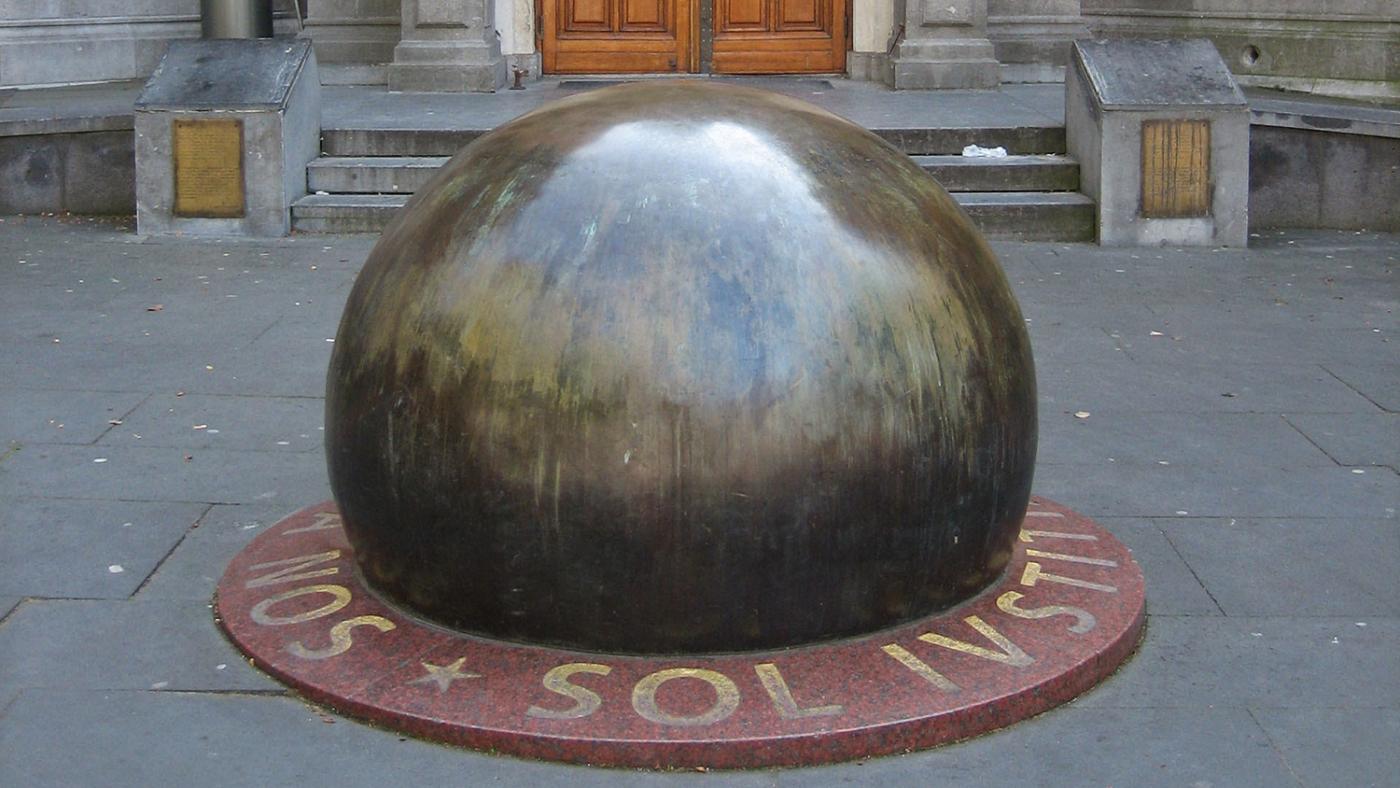
Het bronzen beeld voor het Academiegebouw, 1994. Foto: DUB